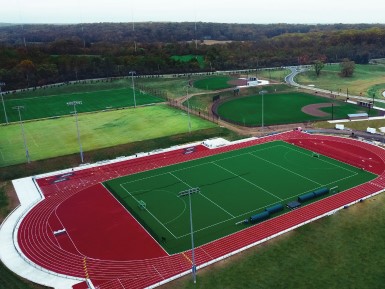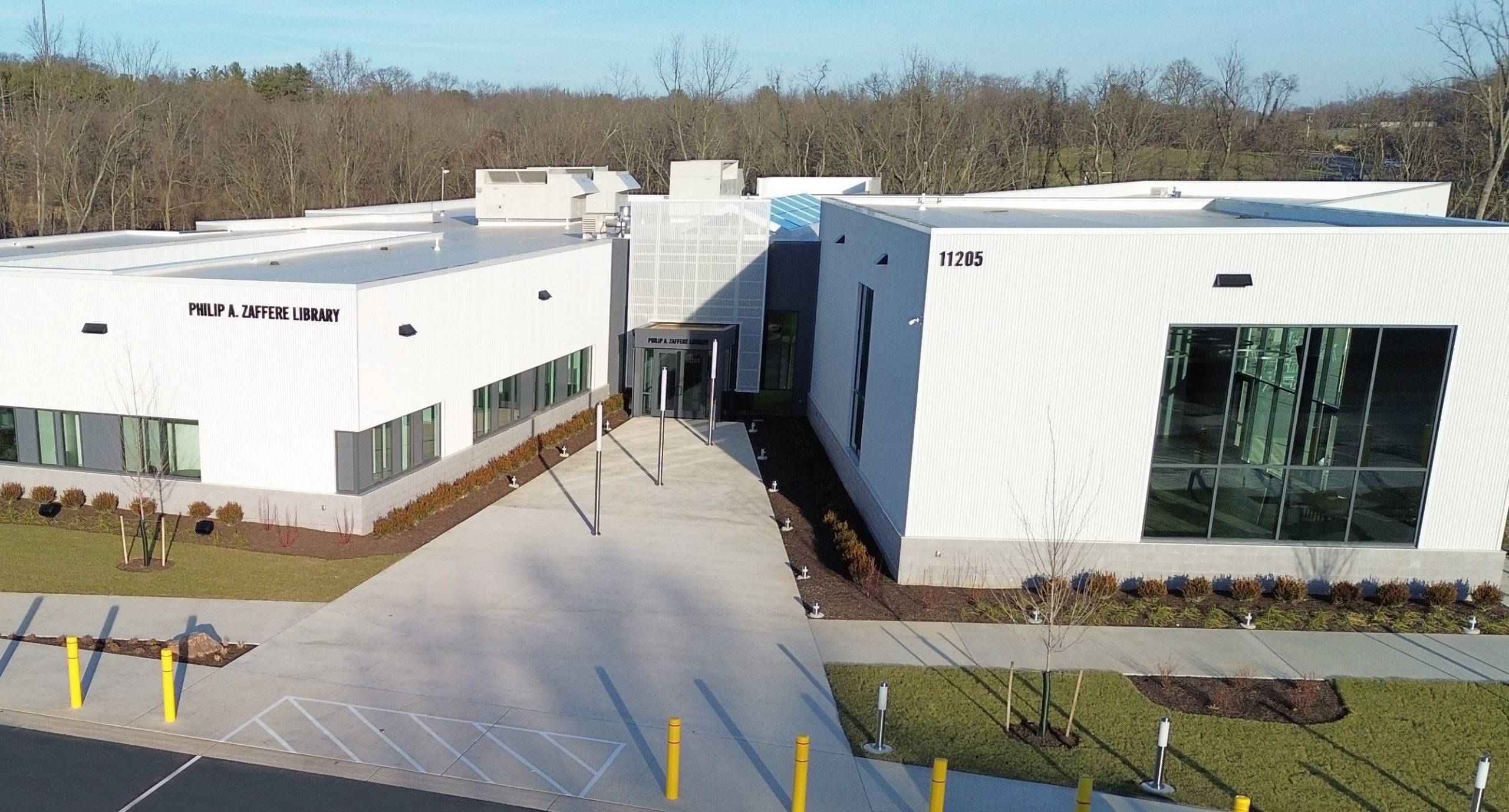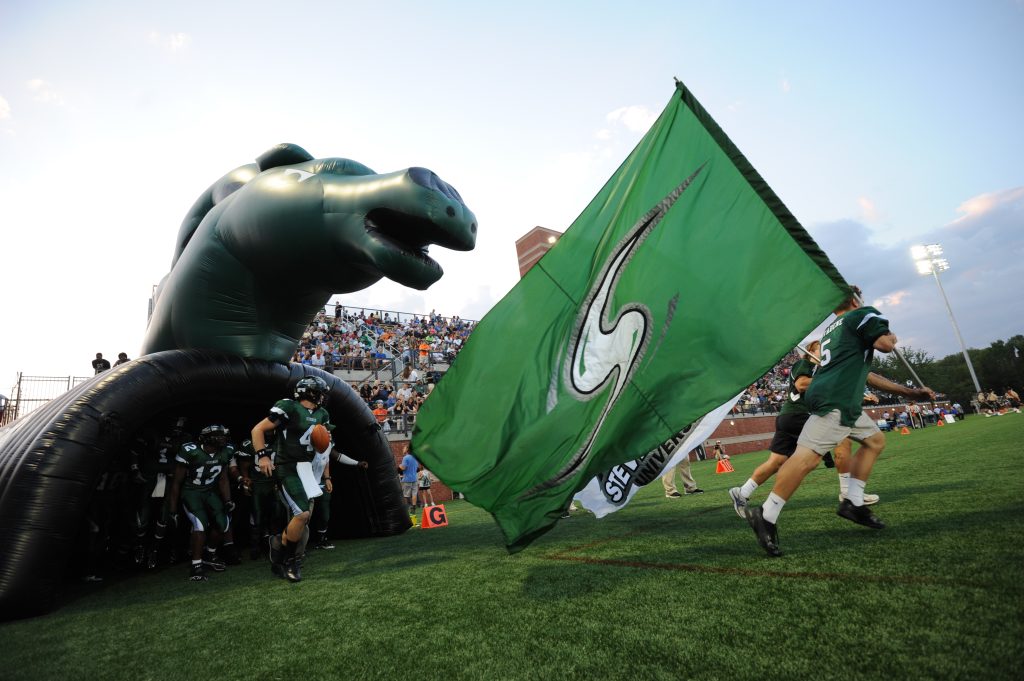Benjamin Wilson Ph.D.
Education
- Ph.D., Mathematics, University of North Carolina at Chapel Hill (2015)
- B.S., Mathematics, Lehigh University (2009)
Professional Experience
- Stevenson University Associate Professor, Mathematics 2015-present
Research
My research focuses on dynamical systems, ergodic theory, and symbolic dynamics. Dynamical systems are mathematical structures which evolve over time according to rigidly defined rules. Ergodic theory uses tools of measure theory to analyze the long-term behavior of dynamical systems. The study of dynamical systems has applications in fields such as physics, biology, astronomy, economics, and information theory.
Some of my work looks at generalizing the notion of neural complexity, a concept used to measure organization in neural networks, to the study of dynamical systems. I have also worked on applications of dynamical systems in computational linguistics.
In an attempt to generally characterize ergodic theory, dynamical systems and symbolic dynamics, I offer several descriptions that concisely and accurately define the topics I research. This not only credits those authors, but also provides those interested in learning more with some books and authors to get them started. The quotes are listed in chronological order.
“In both its qualitative and quantitative aspects, modern theoretical dynamics is largely concerned with recurrence and transitivity. The methods used in the study of recurrence and transitivity frequently combine classical differential analysis with a more abstract symbolic analysis. This involves a characterization of the ordinary dynamical trajectory by an unending sequence of symbols termed a symbolic trajectory such that the properties of recurrence and transitivity of the dynamical trajectory are reflected in analogous properties of its symbolic trajectory.” –Marston Morse and Gustav Hedlund (Symbolic Dynamics, 1938)
“The study of topology is supposed to have started with a problem concerning the seven bridges of Koenigsberg; the study of ergodic theory originated with certain considerations in statistical mechanics. The mathematical outgrowth of the bridge problem is a theorem about odd and even vertices in graphs; the mathematical outgrowth of the gas problem is a theorem about the asymptotic behavior of measure-preserving transformations.” –Paul Halmos (Lectures on Ergodic Theory, 1956)
“In its broadest interpretation, ergodic theory is the study of the qualitative properties of actions of groups on spaces. The space has some structure (e.g., the space is a measure space, or a topological space, or a smooth manifold) and each element of the group acts as a transformation on the space and preserves the given structure (e.g., each element acts as a measure-preserving transformation, or a continuous transformation, or a smooth transformation.)” –Peter Walters (An Introduction to Ergodic Theory, 1975)
“Ergodic theory is the mathematical study of the long-term average behavior of systems.” –Karl Petersen (Ergodic Theory, 1983)
“Dynamical systems originally arose in the study of systems of differential equations used to model physical phenomena. The motions of the planets, or of mechanical systems, or of molecules in a gas can be modeled by such systems.” –Douglas Lind and Brian Marcus (An Introduction to Symbolic Dynamics and Coding, 1995)
“Dynamical systems is the study of the long-term behavior of evolving systems.” –Michael Brin and Garrett Stuck (Introduction to Dynamical Systems, 2002)
Publications
- Petersen, Karl, and Benjamin Wilson. “Dynamical intricacy and average sample complexity.” Dynamical Systems (2017): 1-50.
- Wilson, Benjamin. “Measuring complexity in dynamical systems.” PhD diss., The University of North Carolina at Chapel Hill, 2015.
Teaching
Courses taught at Stevenson:
- MATH 465 – Senior Internship Capstone
- MATH 418 – Mathematical Modeling MATH 365 – Independent Research MATH 326 – Linear Algebra MATH 321 – Differential Equations
- MATH 301 – Mathematical Structures
- MATH 222 – Calculus III
- MATH 221 – Calculus II MATH 220 – Calculus MATH 147 – Precalculus
- MATH 137 – College Algebra FYS 100 – First Year Seminar
Teaching goals:
My main goals as a math educator are to foster a deeper level of mathematical understanding and an appreciation for the creative process involved in doing mathematics. I want my students to be independent and active learners that can think logically and solve problems that no one has ever encountered before. To those ends, I make every attempt to incorporate Inquiry Based Learning into my classrooms. According to the Academy of Inquiry Based Learning (AIBL) “Inquiry Based Learning, or IBL for short, is a broad range of empirically validated teaching methods which emphasize (a) deeply engaging students and (b) providing students with opportunities to authentically learn by collaborating with their peers.” On the first day of class each semester I pose the following question to my students:
“How does a person learn something new?”
Common themes in the responses generally revolve around the concepts of practice and active participation. Students rarely mention anything about watching someone else do it over and over or memorizing facts. The only way to comprehend a new mathematical concept is by actively participating in the process of learning the concept. For this reason, I make it a priority to keep my students as active and engaged as possible in my lessons.
Highlights
Learn More
DISCLAIMER: The content of this faculty profile page was created, authored, and published by the identified faculty member. Stevenson University (SU) makes absolutely no guarantee as to the currency, accuracy, or quality of information published. The views and opinions expressed on this page or any links made available are strictly those of the author and do not necessarily state or reflect those of SU. The content of this profile page has not been reviewed or approved by Stevenson University.






